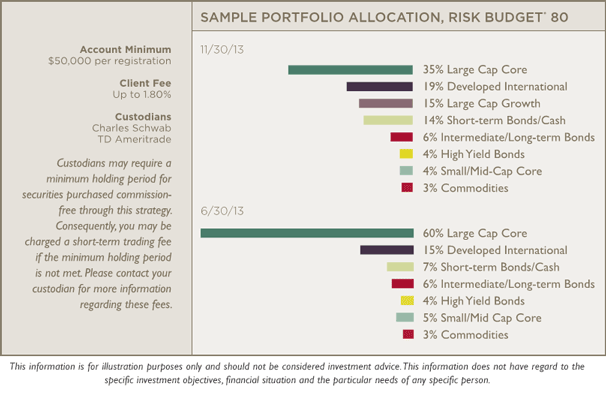ETFs – CLS Investments LLC
Post on: 31 Март, 2015 No Comment

An Exchange Traded Fund (ETF) is an investment fund that is priced and traded on an exchange throughout the day just like a stock. ETFs hold a basket of securities (stocks, commodities, or bonds), and most track an index. Since they were launched in 1993, ETFs have gained tremendous popularity and there are now more than 1,100 available, representing over $1 trillion in assets.
CLS began using ETFs in the late 1990s and began to emphasize them in 2002. We are now one of the largest active money managers of this versatile investment vehicle.* In fact, CLS’s most aggressive ETF model ranks among the top 6% of all ETF portfolios tracked by Morningstar over the past five years.** Learn more about how CLS’s other ETF models ranked in Morningstar’s latest ETF Landscape Report.
CLS is one of the largest active money managers of ETFs with more than $2 billion invested.*
Most CLS strategies are dominated by the inclusion of ETFs and some strategies include only ETFs. We favor this investment option due to the multitude of benefits they offer, including:
Due to their low portfolio turnover, ETFs tend to have lower expense ratios than traditional mutual funds. ETFs also do not impose back-end redemption charges like many mutual funds.
Style drift is defined as the divergence of a fund from its stated investment style or objective. With mutual funds, style drift often occurs as a result of intentional portfolio investing decisions by management, a change in fund management, or company growth (for example, a small cap company moving to a mid cap categorization). Since ETFs track an index, they provide much more stable market exposure. For CLS, using ETFs within a investor’s portfolio means we can better ensure that a investor’s portfolio’s allocation stays in line with what is appropriate for his or her risk budget.
Traditional mutual funds’ prices are set once per day (usually 4 PM Eastern). Conversely, since ETFs price and trade throughout the day like individual stocks, CLS has the opportunity to be more responsive to changing market conditions. This increased flexibility also gives us the ability to access a specific asset class or market segment in a single transaction.
The wide variety of ETFs available and the inherent diversification they provide since they track an entire index means they can deliver a wide range of clearly differentiated market exposure, including to broad-based indices, broad-based international and country-specific indices, industry sector-specific indices, bond indices, and commodities.
ETFs track market indexes that may contain hundreds or thousands of securities, which provides ETF investors the diversification of a typical index mutual fund with the trading flexibility of a stock. By using ETFs, CLS can execute at any time during the trading day a single ETF trade that gives the portfolio broad exposure to an entire asset class, country, region, or sector.
Most ETFs post their exact holding on a daily basis. In contrast, actively managed mutual funds and other investment vehicles only disclose their holdings quarterly or semiannually. The ETF transparency enables our portfolio managers to better hone in on areas that are performing well and allows the investor to know what he or she is holding at any given time.
If a traditional mutual fund must sell securities to raise cash to meet redemptions, related capital gains are distributed to all remaining investors in the fund. Conversely, since ETFs are sold on an exchange, when one investor sells shares in an ETF and another investor buys them, the underlying securities in the ETF do not need to be sold in order to raise cash for the redemption. In other words, buy/sell activity of an ETF investor does not typically affect other shareholders.














